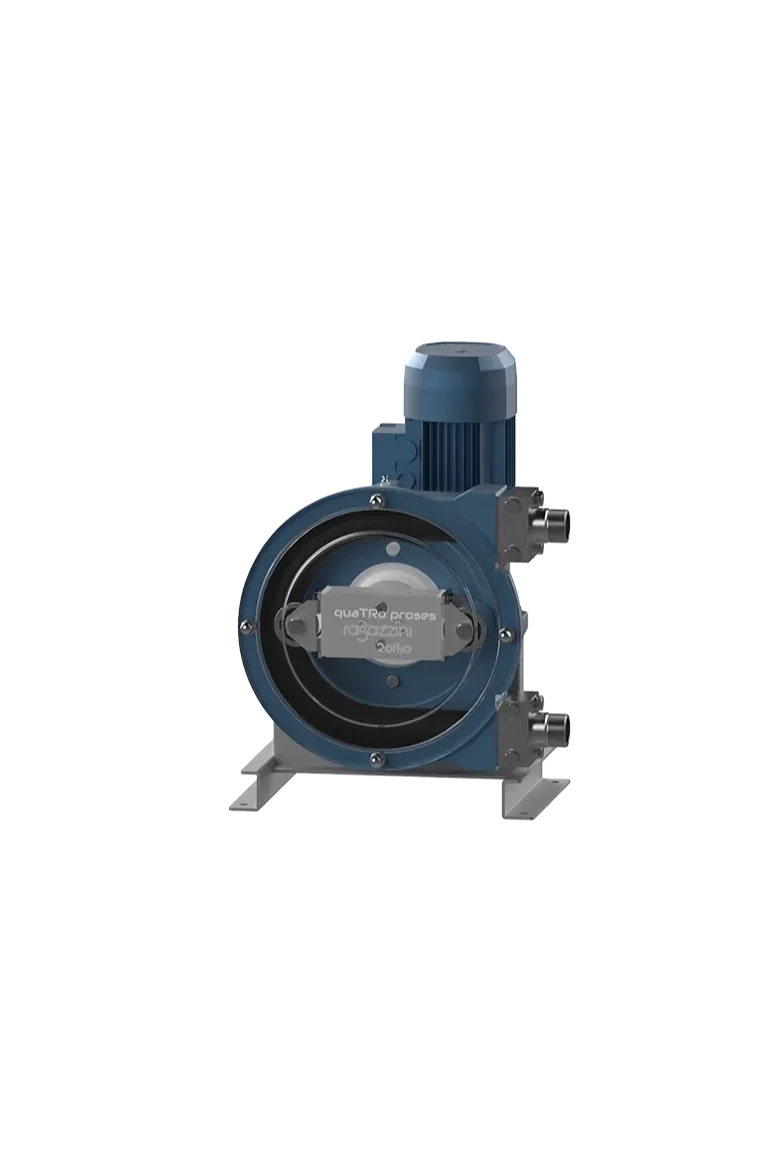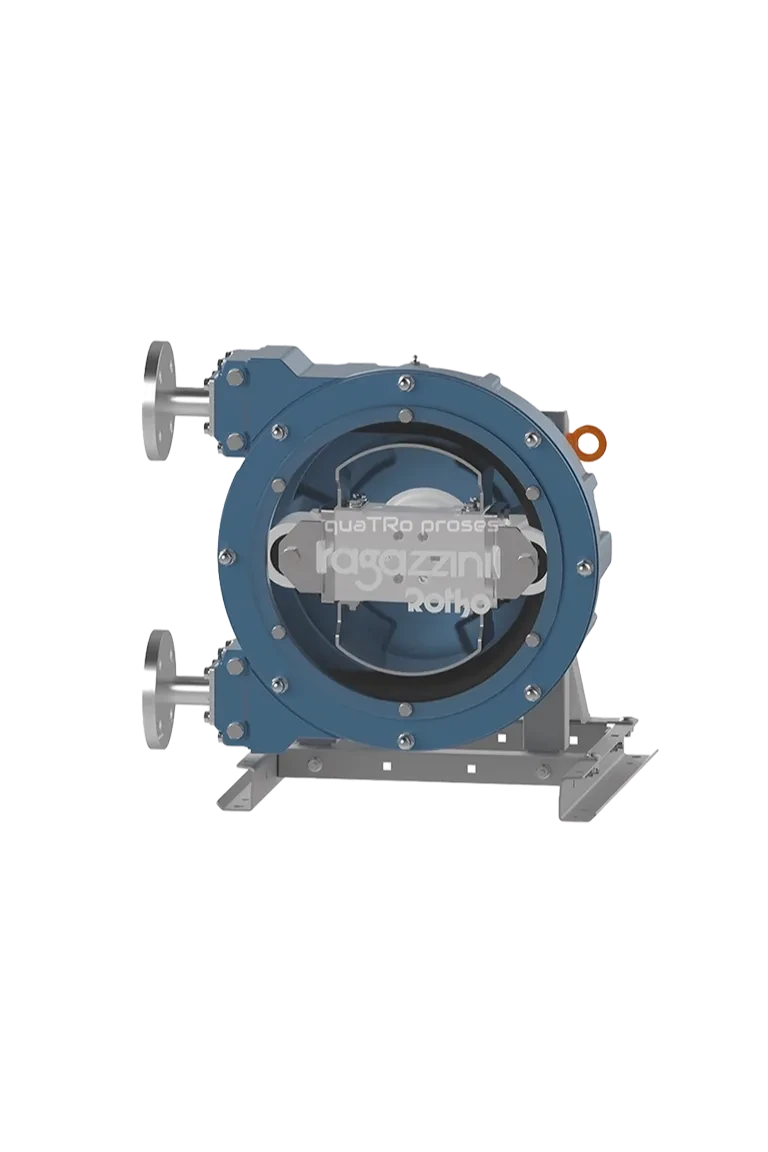Peristaltic Pump
The working principle of the hose pump is inspired by the peristaltic movement of the human digestive system. For this reason, it is also known as a peristaltic pump.
The elastomer hose, which is crushed by a roller and then returns to its original form, creates a vacuum to draw the fluid into the pump intake. Other rollers push the fluid towards the pump's outlet, completing the transfer. The working principle of this equipment has been designed to minimise any potential harm to the transferred fluid. Hose pumps offer distinct advantages over equivalent positive displacement pumps, particularly in the context of sensitive product transfers.
Hose pumps are widely accepted as heavy-duty dosage and transfer pumps in many different industries and processes. They deliver far better results compared to other positive displacement pumps, especially with fluids like viscous, abrasive, sticky, and those with solid particles. In filter press dewatering processes, hose pumps also provide superior dewatering performance compared to equivalent pumps.
Thanks to their strong suction capability, hose pumps can easily vacuum fluids, including viscous flows, into the intake chamber, unlike many positive displacement pumps. This eliminates the need to position the pump below the tank or pool from which suction will be made. Hose pumps can operate with a suction height of up to -9.5 meters.
Advantages of Hose Pumps:
The ability to operate dry means that even when the fluid is exhausted, the pump continues running without damaging its components. Dry running is an undesirable condition in most other positive displacement pumps.
With its bidirectional operation, the hose pump can work in both directions without changing the suction and discharge lines. When the fluid needs to be transferred in different directions on the same line, the hose pump can be used bidirectionally by simply reversing the motor direction.
The design is seal-less, allowing the fluid to be transferred by contacting only the hose, without the need for sealing elements inside the casing. This prevents seal-related failures, especially in abrasive or adhesive fluids.
The operational cost is much lower compared to other positive displacement pumps. Since the fluid only contacts the hose for transfer, there are no additional spare part costs. The hose pump has a long lifespan because the working speed usually does not exceed 60-70 rpm, depending on the fluid characteristics and process.
Hose pumps are one of the highest particle-permeability pump types. The transfer of fluids with higher concentrations and sizes of solid particles becomes increasingly difficult. Unlike other positive displacement pumps, hose pumps are less affected by clogging and spare part issues. The fluid is transferred by swimming inside the hose, reducing wear problems caused by friction, leading to lower maintenance costs.
The leak detector in the hose pump body detects any leakage caused by hose rupture and alerts the operator, stopping the pump to prevent further damage. This ensures that the problem is immediately noticed, and further operation is halted to prevent more significant issues.
The hose pump is designed to be user-friendly, making it easy to intervene in case of failure and perform maintenance quickly. It is far easier to service than equivalent positive displacement pumps.
For detailed information about the models of Hose Pumps, you can explore the PSF, MS, and SDF series below.



